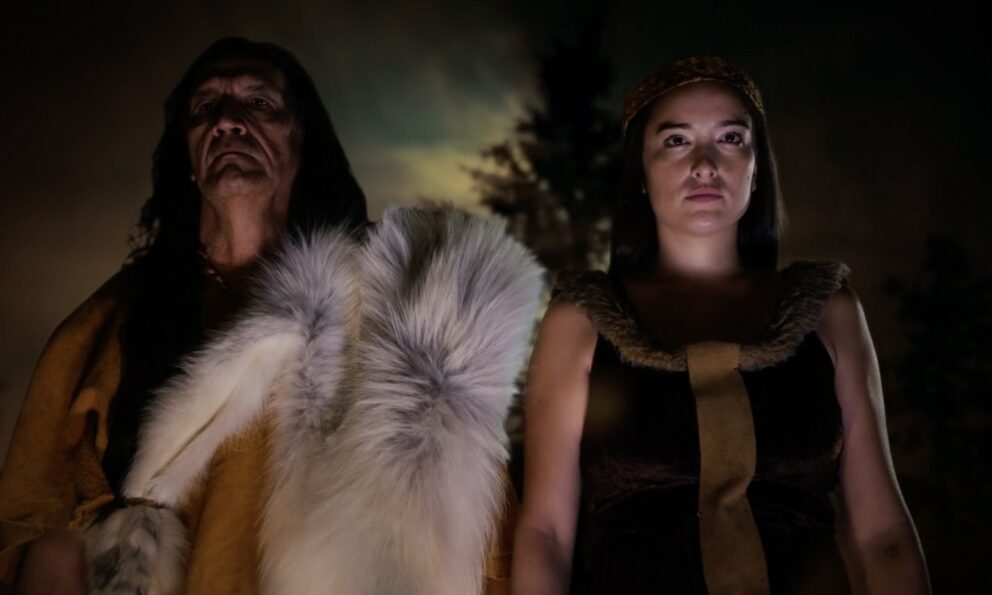Introduction
There has been tremendous uptake since the release of the protocols, and as production teams begin to formally implement various practices, they are seeking a deeper understanding of how to apply protocols throughout their process.
How do we integrate the traditional values and practices into the contemporary way of doing things and reflect them in the business models we want to employ
The tools and resources offered below are an expansion of the document Pathways and Protocols: A Media Production Guide for First Nations, Métis and Inuit Communities, Cultures, Concepts and Stories.
We have learned that it requires real investment, long-term engagement, and a framework for responsibility to communities and culture. As a next step we are activating the protocols by clearly articulating some of the decision-making processes and highlighting further best practices from recent productions. As we continue to develop protocols and practices for the industry, we will continue to develop tools for use by filmmakers, communities and the larger industry.
We would like to thank the most recent contributors to our Protocols & Pathways work: Nyla Innuksuk, Kevin Settee, Caroline Monnet, JJ Neepin, Danis Goulet, Jennifer Podemski, Julie Nagan, Helen Hague Brown, Elle-Máijá Tailfeathers, Jason Brennan, Ryan Cooper, Loretta Todd, Darlene Naponse, Nathaniel Lyman and Marie Clements.
Thank you to the Inspirit Foundation for their support for developing Protocols Tools and Resources.


Following the pathways and protocols is the only way Indigenous stories can be told these days. You can’t make excuses anymore about why projects can’t be made properly. It requires extra effort, and it will cost more – but that’s the price you have to pay to work with Indigenous creators and communities. It takes extra planning but is worth it.”
Nyla Innuksuk, Director, Slash/Back
Working in Indigenous Communities
Everyone has their own storytelling process, responsibility, relationship with community and personal history. In the process of filmmaking, it is important to determine how this is respected and verified to ensure accountability.
How am I impacting this community? Am I making a positive or negative impact? How am I being responsible for it? What does this mean economically, socially and to the environment? These are some of the questions that filmmakers pose to themselves when contemplating how to work in community.
Meaningful collaboration means that Indigenous communities are getting involved at earlier stages of production, contributing to the telling of their own stories by working as key creatives in projects. This includes building trust and maintaining strong connections within that community.
Working with Indigenous Cast and Crew
Indigenous creators are looking for practical, hands-on learning enabling them to understand and navigate the industry looking for professional development opportunities. Filmmakers have outlined a number of considerations to ensure that Indigenous training and mentorship opportunities are successful.
In some instances, Indigenous filmmakers may be working with a largely non-Indigenous crew. External crew coming into Indigenous productions often have a very regimented way of operating that does not always work and is considered disrespectful in an Indigenous context; “all-knowing” behaviours are not conducive to Indigenous practices and values.
Filmmakers describe an industry-wide lack of cultural understanding, compounded by the fact that there are not enough Indigenous people working as crew (from cinematographers to sound professionals). Sometimes crew are aware of their biases and are willing to examine and discuss them without getting defensive. Being willing to examine biases and assumptions, without getting defensive, is essential for crew to build cultural understanding.
Cultural Humility is “a lifelong process of self-reflection and self-critique whereby the individual not only learns about another’s culture, but one starts with an examination of her/his own beliefs and cultural identities.”
National Institutes of Health
Co-Productions
While Indigenous filmmakers may choose to enter into co-productions for many reasons, at times an Indigenous filmmaker’s only access to larger scale production funding may be through partnering with non-Indigenous production companies. These projects serve as an entry point into the industry and often accelerate experience through opportunities. The original On-Screen Protocols & Pathways document describes some emerging and best practices around ensuring successful collaborations.
However, recent experiences of a number of Indigenous filmmakers raises concerns with co-production agreements and models. How do we achieve respect, reciprocity and responsibility in co-production?
While co-productions provide a certain amount of agency and control, Indigenous filmmakers are seeking more beneficial agreements and increased power and decision-making. In looking at co-production options, creators want to understand what all of the possibilities are and ensure that they are as protected as possible.
On-Set Protocols
Re-traumatization, or the repercussions of intergenerational trauma, need to be mitigated when dealing with potentially triggering subject matters, which increases the storyteller’s responsibility to ensure safety in treatment of “subjects” (in both subject matters and in the presentation of material). The same can be said when dealing with highly complex and sensitive issues with painful truths. Opening stories opens gateways and digging up sensitive issues requires both taking and giving back; involving an obligation to support and heal wounds that we have dug into.
One way to ensure the safety of “subjects” is to ensure the cultural acuity of those working in community or on sensitive issues. This means cultural sensitivity training is a must, but also, just a starting point. It may be necessary to ensure the appropriate cultural and emotional supports are present during filming or screening. Many productions use daily smudges, have community health workers on site, and hold ceremony at the beginning and end of a production. Ceremonial practices are also considered bonding experiences with non-Indigenous crew members.
